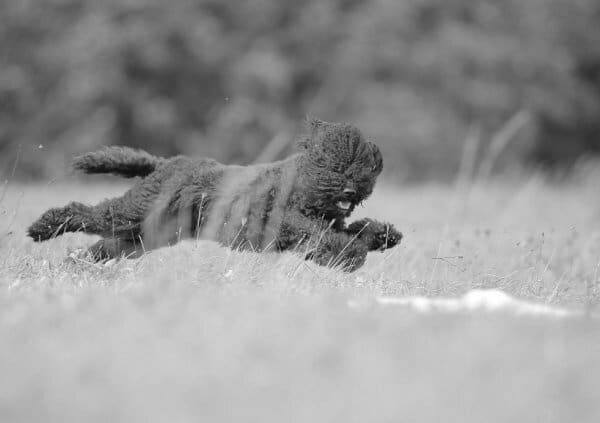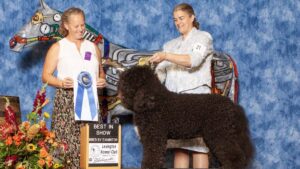
The Breeder/Owner Handler | Michelle Detour
Owner-handler shares 46 years in dog sports, breeding Briards and Barbets, and achieving success in the Owner-Handled Series.
Home » Meet The Breeds » Barbet Dog Breed
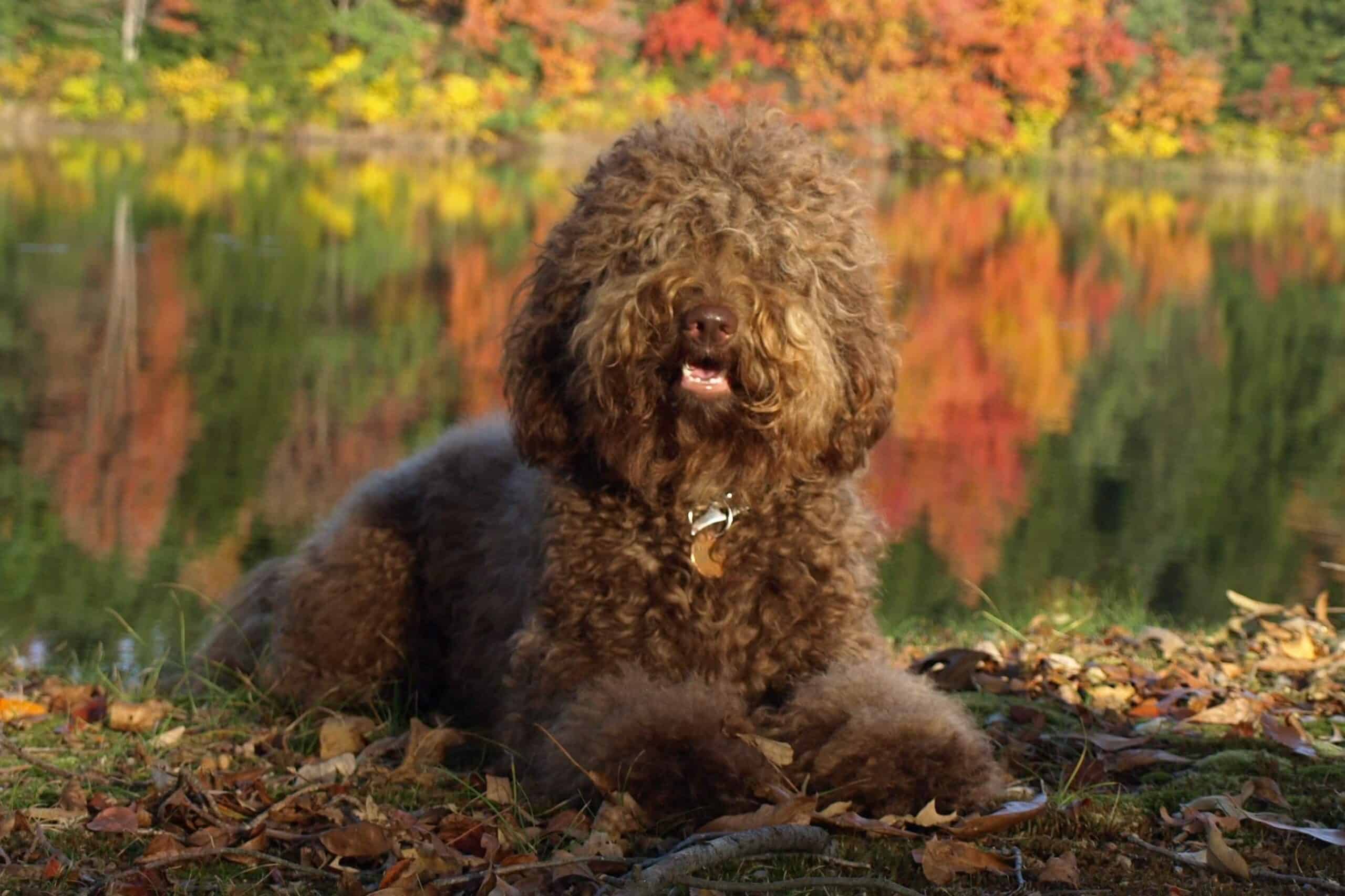
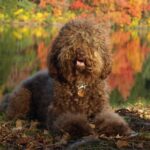
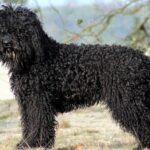
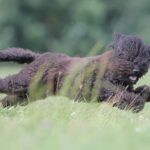
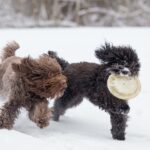
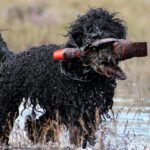
The Barbet (pronounced bar-bay) is an ancient breed known for its curly coat and affable disposition. Hailing from France, this water dog is easily recognized by its distinctive beard (barbe in French) from which the breed derives its name. While not as widely known in the United States as some other hunting breeds, the Barbet has a storied history. For centuries, it served as a loyal companion by retrieving waterfowl before the invention of the firing arm. The breed’s gentle and playful nature, combined with its intelligence and adaptability, make it a delightful family companion today and an engaging partner in a variety of activities.
Sporting
19 – 24.5 Inches
35 – 65 Pounds
12 – 14 Years
| Country of Origin | France |
|---|---|
| Bred For | Flushing & Retrieving Waterfowl, Companionship |
| Known For | Rustic Appearance, Profuse Coat, Cheerfulness, Intelligence |
| Popularity | Low |
| Temperament | Friendly, Bright, Sweet-Natured |
| Activities | Hunting, Running, Swimming, Conformation Shows, Dog Sports |
The Barbet’s history is as rich and distinctive as is the breed’s curly coat. This water dog’s roots can be traced back many centuries, with depictions of similar canines appearing in artwork from the 14th century. However, the Barbet, as it is known today has its origins firmly fixed in present-day France.
Initially, the Barbet was a utilitarian dog, prized for its prowess as a waterfowl retriever. French hunters relied on the rough water dog to fetch birds from swampland and other marshy environments. Its water-resistant, curly coat, combined with its webbed feet, made the Barbet particularly adept for such tasks.
The name Barbet is believed to be derived from the French term barbe, meaning “beard,” a nod to the breed’s characteristic beard-like facial hair. The breed has also played a pivotal role in the development of several other breeds. The Poodle, in particular, owes a significant degree of its lineage to the Barbet.
However, despite its historical significance and early development, the breed has faced the threat of extinction. Following the two World Wars, the breed’s numbers were decimated. Recognizing the breed’s cultural significance and its use in the development of so many other water-loving breeds, dedicated enthusiasts undertook efforts to revive and preserve it.
The modern Barbet remains true to its historical roots, with many of its inherent characteristics, such as its love for water and its affable nature, remaining unchanged. The breed has garnered recognition from various kennel organizations and registries around the world, with the American Kennel Club (AKC) officially recognized the breed in 2020.
From its beginnings as a trusted hunting partner to its present-day role as a beloved family companion, the breed has stood the test of time, showcasing its resilience, adaptability, and unwavering charm.
Adult Barbets typically stand between 19 and 24.5 inches tall at the withers.
Mature Barbets generally weigh from 35 to 65 pounds, proportionate to the individual dog’s height.
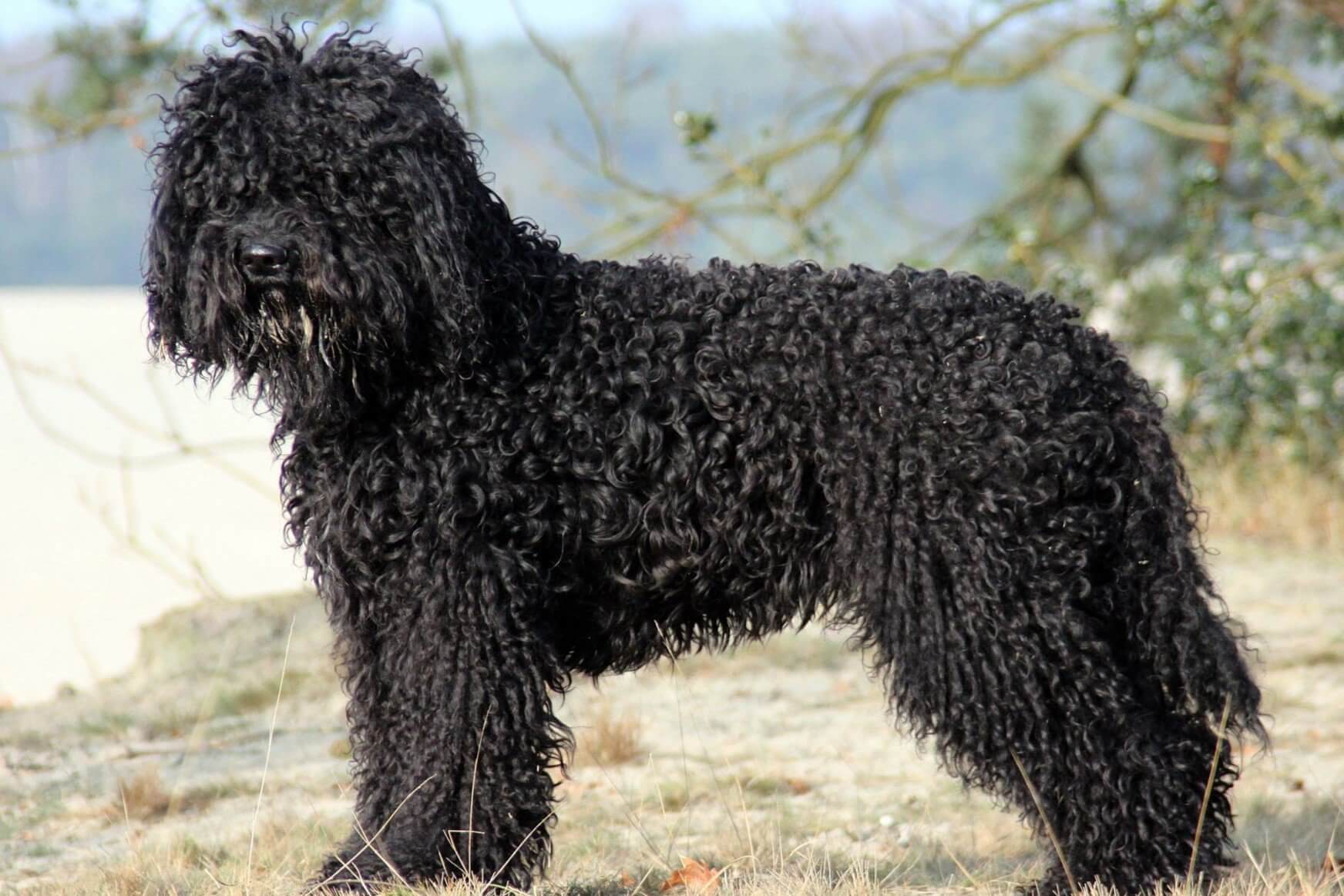
The Barbet’s physique exudes both strength and elegance. A robust frame, with solid bone and a well-muscled body, appears slightly rectangular in shape. This proportion emphasizes the breed’s historical role as a strong and persistent water dog. Together with the breed’s substantial head, sweeping tail, and graceful movement, the Barbet’s silhouette is fundamental to its usefulness, whether retrieving fallen game or playfully bounding through the yard.
Texture: The dense and curly texture of the Barbet’s coat is a defining breed characteristic. The profuse coat, which sports a distinctive beard, is a reminder of the breed’s centuries-old usefulness as a rough water dog. The hair’s unique texture provides protection from the elements and underscores the breed’s ability to perform well in aquatic environments.
| Standard Color | |
|---|---|
| Black | ee |
| Brown | ee |
| Fawn | ee |
| Fawn | ee |
| Gray | ee |
| White | ee |
| Standard Marking | |
|---|---|
| White Markings | ee |
| Gray Markings | ee |
| Black Markings | ee |
| Brown Markings | ee |
| Fawn Markings | ee |
A Note About Color: The Barbet may be found in all shades of black, gray, brown, and fawn; with or without white markings. White dogs with colored markings, called pied, are as equally acceptable as the solid-colored dogs.
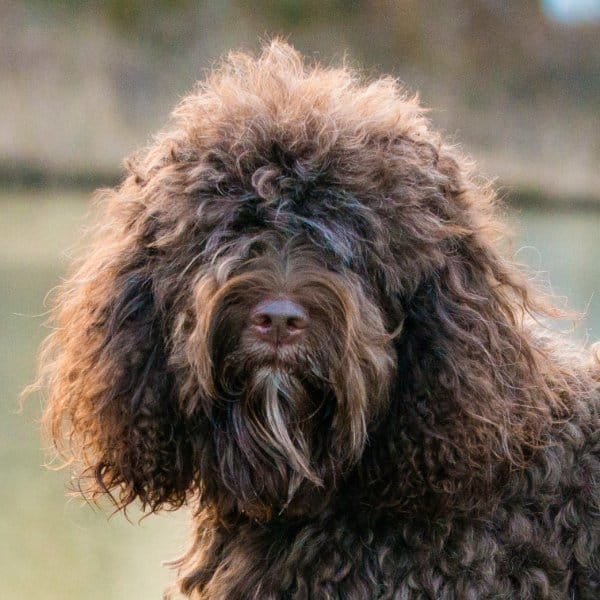
The Barbet’s tail is an extension of both its topline and its character, serving both a functional and an expressive role. Strong at its base, the tail tapers gradually towards the tip. At rest, it hangs down, reaching the hocks or slightly below. During moments of alertness or excitement, the tail may be carried slightly raised, but it rarely curls over the back. The breed’s signature tail emphasizes its water dog lineage, acting as a rudder in fast-running streams and still bodies of water.
As a breed renowned for its amiable nature and storied past as a waterfowl retriever, the Barbet flourishes when provided with both physical activity and emotional connections. Whether interest in the breed stems from a desire for a loyal companion, a working partner, or an affable show dog, understanding its many unique characteristics will all but assure a mutually fulfilling connection between the Barbet and its family members.
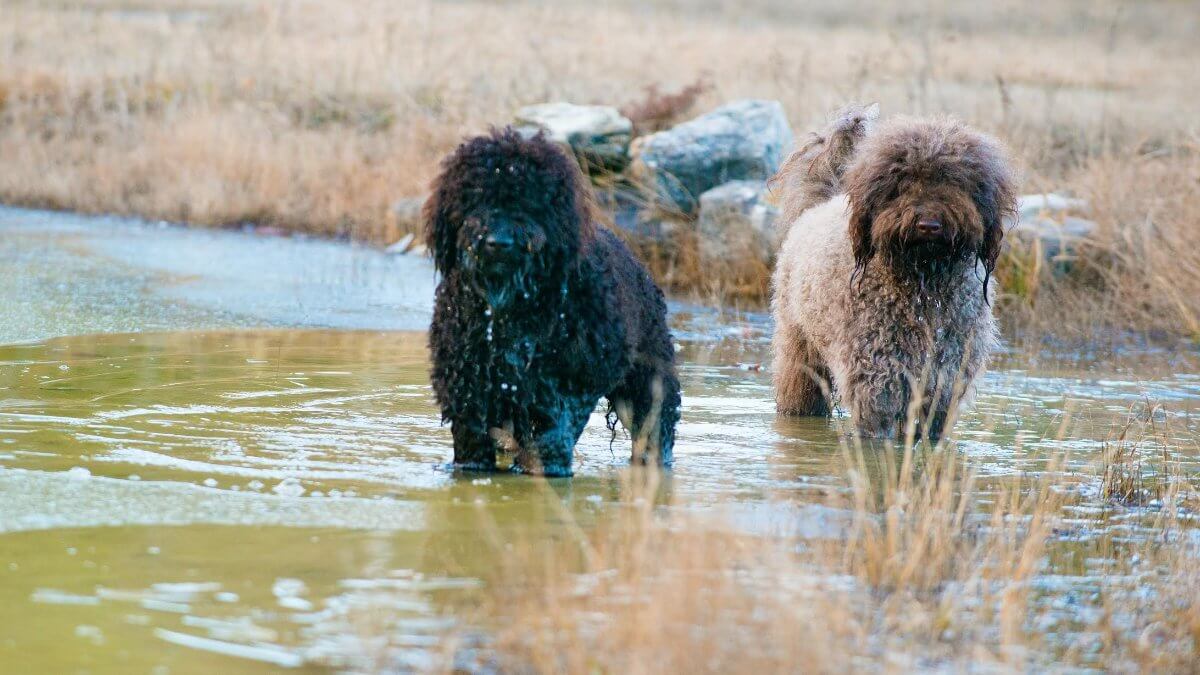
Lifespan: The average lifespan of a Barbet ranges between 12 and 14 years. With optimal care and an active lifestyle, some individuals can even surpass this age range.
While the Barbet is generally considered a healthy breed, like any breed or mixed-breed dog, it can be susceptible to certain health risks. Awareness of these potential issues is key to proactive care and early detection.
The Barbet, with its spirited and sensitive nature, exudes warmth, intelligence, and enthusiasm. This breed forms strong bonds with family members and tends to mirror their emotions. Barbets are inherently social creatures, so prolonged isolation doesn’t sit well with them and can sometimes lead to separation anxiety. Their friendly and playful approach to life means they typically enjoy the company of people and other dogs, especially if they’ve been acquainted with them from a young age. Children often find a gentle and patient friend in the Barbet, making the breed a good choice as a family companion. With the right socialization, these dogs will typically extend warm greetings to strangers; however, their inherent loyalty may lead them to approach unfamiliar situations and new people with an appropriate amount of caution. This sensitivity also means the Barbet responds best to gentle training methods that are anchored in encouragement and praise.

As a breed with a rich heritage as a water dog, the Barbet requires a balanced diet to fuel its energy. When considering what to feed a puppy, it’s vital to ensure the food supports the growth phase. A high-quality puppy formula is needed, one that’s rich in essential nutrients, proteins, and fats. Transitioning to adult food usually takes place between 12 to 15 months. The amount of food required can vary based on factors such as age, metabolism, and activity level. On average, the mature Barbet may consume between 2 to 3 cups of quality dry food daily, divided into two meals. However, it’s always a good idea to consult with the dog’s breeder and veterinarian for advice on adjusting portion sizes. Barbets, like all breeds, can be susceptible to obesity if overfed. Monitoring weight gain and ensuring adequate exercise is provided can help with maintaining a healthy weight. Treats, while useful for training, should only be given in moderation.
Training a Barbet can be a fulfilling experience, given the breed’s innate intelligence and desire to please. While these dogs can be a relatively good choice for novice dog owners, they thrive best when positive reinforcement techniques are used. This breed is not one to react positively to harsh or punitive training methods. Their sensitive nature responds well to praise, treats, and affection, and since they are quick learners, they pick up new commands and tricks with relative ease. However, this intelligence means they can sometimes be a tad stubborn or independent-minded. Consistency is key with training, including managing the breed’s sometimes vocal nature. While not incessantly loud, the Barbet can express itself through vocalizations, especially when it spots something unusual and wants to alert its owner. Early socialization and training a “quiet” command can be helpful.
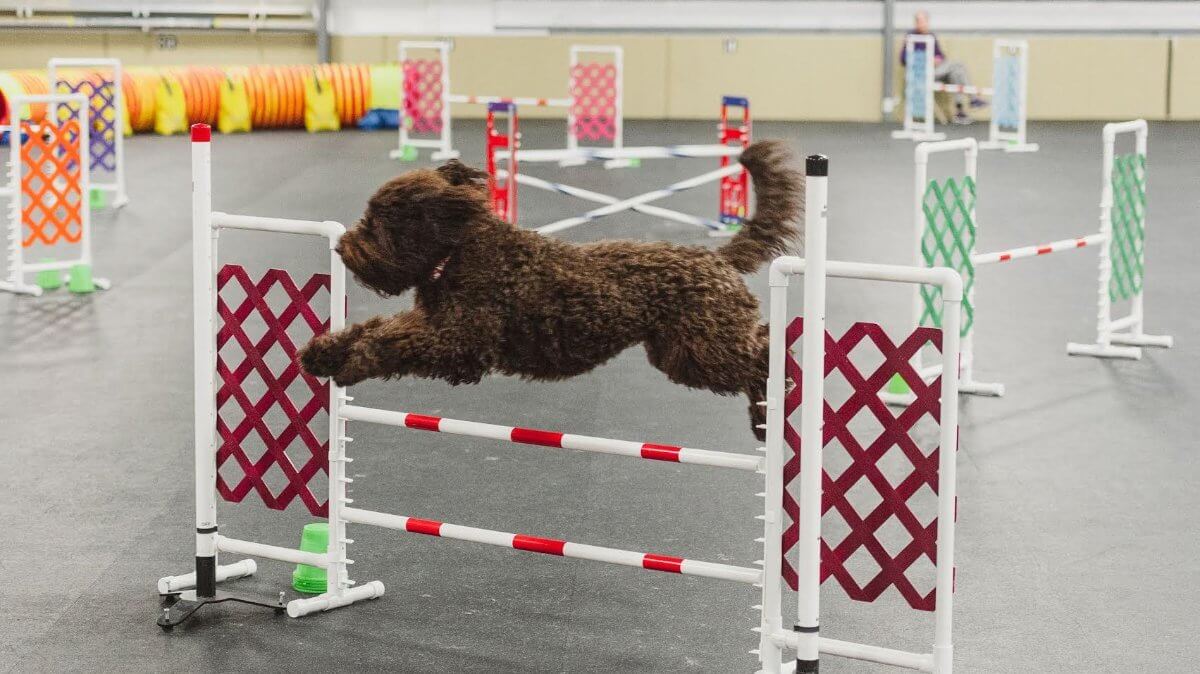
The Barbet’s usefulness as an active water dog has endowed it with a natural zest for physical activity. It’s therefore important to make sure the dog receives adequate exercise to promote its physical and mental well-being.
| Energy Level | Moderate to High |
|---|---|
| Exercise Requirements | 2 Hours/Day (Minimum), Daily Walks, Weekly Swimming, Regular Exercise, Playing with Another Dog, Mental Stimulation |
Endowed with a moderate-to-high energy level, the Barbet thrives on daily exercise. These dogs will happily participate in most any activity, but brisk walks, games of fetch, and swimming are especially beneficial. The breed’s intensity, while not overwhelming, can sometimes surprise new owners. It’s important, therefore, to incorporate some rigorous exercise each day to help the Barbet expend all of its innate energy. Playfulness is also a defining characteristic of the breed. Whether chasing after a ball, engaging in interactive dog toys, or simply romping around in the yard, these dogs thrive on having fun. Prolonged play sessions, interspersed with short bursts of high-level activity, are excellent for helping a Barbet stay healthy and fit. And given the breed’s intelligent and social nature, regular play sessions can also satisfy the need for mental stimulation and social interaction.
The Barbet boasts a distinctive curly coat that’s both dense and water-resistant, a testament to the breed’s water dog heritage. Grooming is essential, not only for aesthetics but also for the dog’s health and comfort.
| Coat Type | Black, Brown, Gray and White |
|---|---|
| Grooming Requirements | Weekly Brushing, Occasional Bathing, Routine Ear Cleaning, Periodic Nail Trimming, Regular Tooth Brushing |
The texture of a Barbet’s coat can vary. Some dogs have rather loose curls while others possess tighter ringlets. In all cases, regular brushing, at least weekly, is necessary to prevent mats and tangles from forming. Using a pin brush or a slicker brush, combined with a metal comb for the finer areas, can yield the best results. This will ensure the coat remains in optimal condition and is free of mats or debris. The Barbet’s coat doesn’t shed profusely, but it does undergo some hair loss that can go unnoticed. This characteristic can make the breed a favorable option for individuals with mild pet allergies. Bathing is also beneficial, though it’s not a frequent necessity. However, these water-loving dogs do like to get muddy, and when they do, a bath with a gentle shampoo and a thorough blow-dry are needed to prevent any moisture-related skin issues from developing. And like all dogs, Barbets benefit greatly from regular dental care, ear cleaning, and nail trimming.
The Barbet’s social nature means it typically cherishes the company of all members of the family. These dogs thrive best in homes where they are integrated into daily activities, be it lounging on the couch, playing in the yard, or even accompanying the family on local visits to nearby shops and businesses. Known for its sociable and adaptable disposition, the Barbet can be an ideal companion for active people. For those living in apartments, the breed’s moderate size and generally calm demeanor indoors can be a plus; however, access to a yard or open space is essential. The breed’s history as a water dog means these purebreds are quite fond of wet environments and even enjoy romping in the snow. However, prolonged exposure to extreme cold should be avoided. On the flip side, the breed’s thick coat can make these dogs more susceptible to overheating. Caution is advised during warm spells, and it’s essential to always provide access to plenty of shade and fresh drinking water during peak summer temperatures.
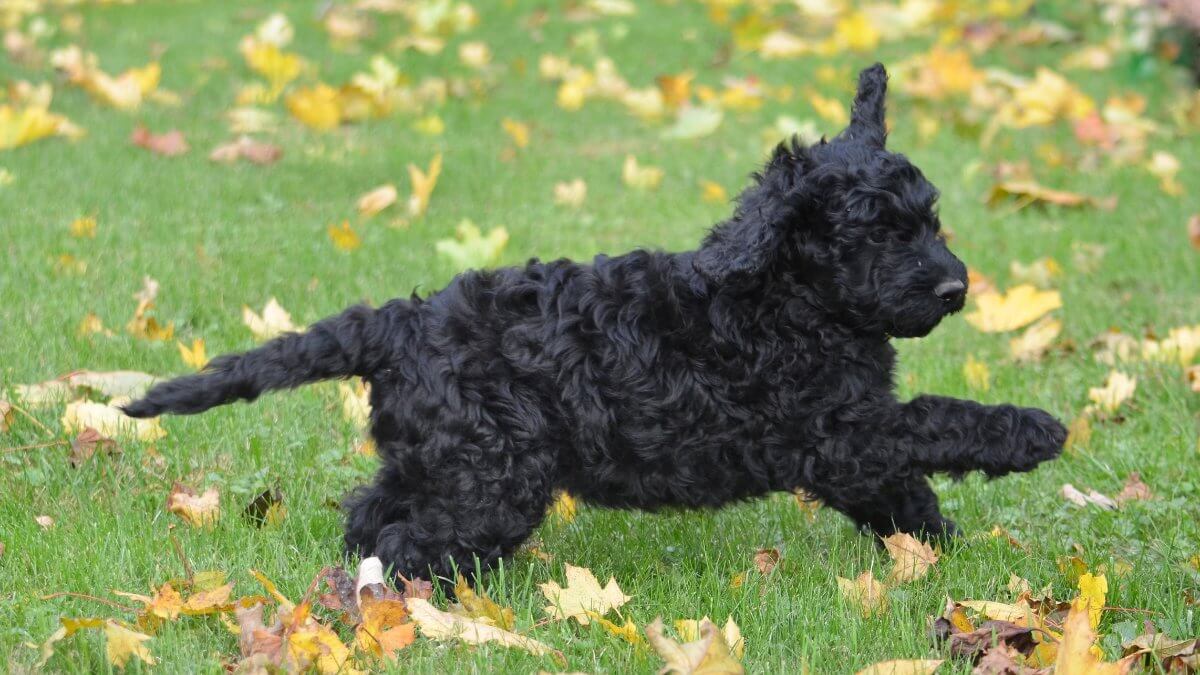
Barbet puppies, with their soft curls and curious eyes, are undeniably appealing. As with all puppies, however, the early stages of life are crucial in shaping good behavior, overall health, and a general sense of well-being. While they are bundles of joy, these babies do come with their own set of responsibilities.
The arrival of a Barbet puppy is the beginning of an adventure that’s filled with many rewards and a few challenges. During the pup’s first year, careful management is required to promote good health and good manners. Proper nutrition is essential at this time, so feeding a balanced diet that’s recommended by the breeder or a veterinarian is important. As the puppy starts exploring its new world, early socialization becomes a cornerstone of its development. Regular outings, whether playdates with other puppies or just casual strolls around the neighborhood, are enormously beneficial. Puppy training classes can also be a great way to introduce a Barbet puppy to new and different situations, and positive methods will typically lead to an enthusiastic learner. Play sessions are important too, as they allow the pup to expend its considerable energy. However, overexertion can strain developing bones and joints, so moderation is key. And regular grooming and wellness exams will help the puppy to become comfortable with these routine appointments. They will not only allow the Barbet to look and feel its best, they can also ensure a lifetime of stress-free experiences.
The Barbet is a versatile breed known for its intelligence, responsiveness, and adaptability. Over the years, many individuals have successfully participated in a variety of activities and dog sports that underscore the breed’s multifaceted capabilities.
The Barbet is recognized by the world’s leading registries and kennel organizations, which categorize the breed into a specific Group based on its unique characteristics. This breed is recognized worldwide under the following Group designations:
| Organization | Group Designation |
|---|---|
| AKC (American Kennel Club) | Sporting |
| UKC (United Kennel Club) | Gun Dog |
| CKC (Canadian Kennel Club) | Sporting Dogs |
| ANKC (Australian National Kennel Council) | Not Recognized |
| RKC (The Royal Kennel Club) | Gundog |
| FCI (Fédération Cynologique Internationale) | Group 8 – Retrievers, Flushing Dogs, Water Dogs; Section 3 – Water Dogs |
The ideal Barbet is described by a Breed Standard that is approved by each of the world’s leading registries and kennel organizations. The Breed Standards for this breed may be found in the following links:
| Organization | Breed Standard |
|---|---|
| American Kennel Club | AKC Barbet Breed Standard |
| United Kennel Club | UKC Barbet Breed Standard |
| Canadian Kennel Club | CKC Barbet Breed Standard |
| Australian National Kennel Council | Not Recognized |
| The Royal Kennel Club | RKC Barbet Breed Standard |
| Fédération Cynologique Internationale | FCI Barbet Breed Standard |
In the United States, the Barbet Club of America is the primary organization devoted to the breed. Established to foster and promote the interest of Barbets throughout the country, this AKC parent club provides breed-specific education and hosts a variety of regional and national events .
In Canada, the Barbet Club of Canada stands as a vital organization dedicated to this French breed. The organization’s members uphold ethical breeding practices, emphasize educational efforts, and host activities that showcase the breed’s many unique characteristics.
In the United Kingdom, the Barbet Club UK is the primary hub for enthusiasts of the breed. This club has significantly contributed to increasing breed awareness by coordinating breed-specific events and building a national community for Barbet lovers.
In the United States, the Barbet Club of America is available to assist any Barbet in need. The organization’s members not only facilitate adoptions but also provide resources on the breed and assistance to adoptive families.
In Canada, rescue groups and Barbet Club of Canada work tirelessly to ensure any dog in distress is taken care of and provided with a new, loving home. The groups’ also run awareness campaigns to educate potential dog owners about the breed’s specific needs.
The United Kingdom too boasts a number of organizations focused on the welfare of Barbets. These groups aim to connect dogs in need with suitable families and also serve as platforms for breed enthusiasts to share advice, resources, and experiences.
While no dog is completely hypoallergenic, the Barbet is often recommended for people with mild allergies due to the breed’s curly hair. However, it’s essential for potential owners with allergies to spend time with a Barbet beforehand to ensure they don’t exhibit any reactions.
Barbets possess a curly coat that sheds minimally in comparison to other breeds. However, it’s worth noting that all dogs (except hairless breeds) will shed to some extent, and the Barbet is no exception. Regular grooming can help to manage and minimize the amount of loose hair and prevent matting.
Barbets are known for their gentle and friendly temperament, making them excellent companions for many families. These dogs bond closely and often exhibit a playful nature, especially with children. With proper socialization, they also tend to get along well with other animals in the household.
Barbets can sport a variety of coat colors, with or without white. However, it’s worth mentioning that the presence of other colors or markings can create a variety of parti-color patterns. Always consult with a reputable breeder for specifics on coat colors and their inheritance.
Barbets typically fall within the weight range of 35 to 65 pounds, depending on factors such as gender, diet, and overall health. Proper nutrition and regular check-ups can ensure a Barbet maintains a healthy weight.
Barbets, being sociable and affectionate dogs, thrive best when they have regular interaction with their favorite people. Leaving a Barbet alone for prolonged periods can lead to feelings of loneliness and even result in behavioral issues.
Grooming-wise, Barbets lean towards being medium-to-high maintenance due to their long, curly hair. Beyond grooming, their affectionate and placid temperament often makes this breed easy to live with. Regular exercise and mental stimulation, however, are vital for the dog’s well-being.
Barbets may bark to alert their owners to unfamiliar sounds or intruders; however, they aren’t known to be incessant barkers. With consistent training and early socialization, any tendency to bark excessively can usually be managed effectively.
Barbets are generally not aggressive at all. In fact, they are known for their friendly and sociable nature, often getting along well with both people and other animals. However, as with any dog, early socialization and positive training are essential to ensure a well-behaved and well-adjusted canine companion.

Owner-handler shares 46 years in dog sports, breeding Briards and Barbets, and achieving success in the Owner-Handled Series.

The body of a Barbet must be both substantial and athletic, exhibiting no exaggeration. The unique silhouette of this medium-sized breed

Owner-handler shares 46 years in dog sports, breeding Briards and Barbets, and achieving success in the Owner-Handled Series.

The body of a Barbet must be both substantial and athletic, exhibiting no exaggeration. The unique silhouette of this medium-sized breed
The best way to ensure a long and happy relationship with a purebred dog is to purchase one from a responsible breeder. Not sure where to begin?
Contact the National Parent Club’s Breeder Referral Program, which is listed on the AKC Breeder Referral Contacts page.
